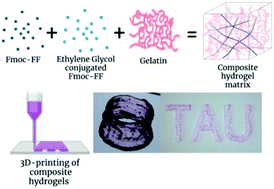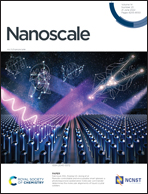Stabilizing gelatin-based bioinks under physiological conditions by incorporation of ethylene-glycol-conjugated Fmoc-FF peptides†
Abstract
Over the last decade, three-dimensional (3D) printing technologies have attracted the interest of researchers due to the possibility of fabricating tissue- and organ-like structures with similarities to the organ of interest. One of the most widely used materials for the fabrication of bioinks is gelatin (Gel) due to its excellent biocompatibility properties. However, in order to fabricate stable scaffolds under physiological conditions, the most common approach is to use gelatin methacrylate (GelMA) that allows the crosslinking and therefore the stabilization of the hydrogel through UV crosslinking. The crosslinking process can be harmful to cells thus decreasing total cell viability. To overcome the need for post-printing crosslinking, a new approach of bioink formulation was studied, incorporating the Fluorenylmethoxycarbonyl diphenylalanine (Fmoc-FF) peptide into the Gel bioink. However, although Fmoc-FF possesses excellent mechanical properties, the lack of elasticity and viscosity makes it unsuitable for 3D-printing. Here, we demonstrate that covalent conjugation of two different ethylene glycol (EG) motifs to the Fmoc-FF peptide increases the hydrophilicity and elasticity properties, which are essential for 3D-printing. This new approach for bioink formulation avoids the need for any post-printing manufacturing processes, such as chemical or UV crosslinking.



 Please wait while we load your content...
Please wait while we load your content...